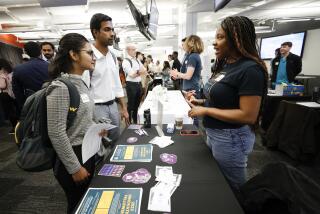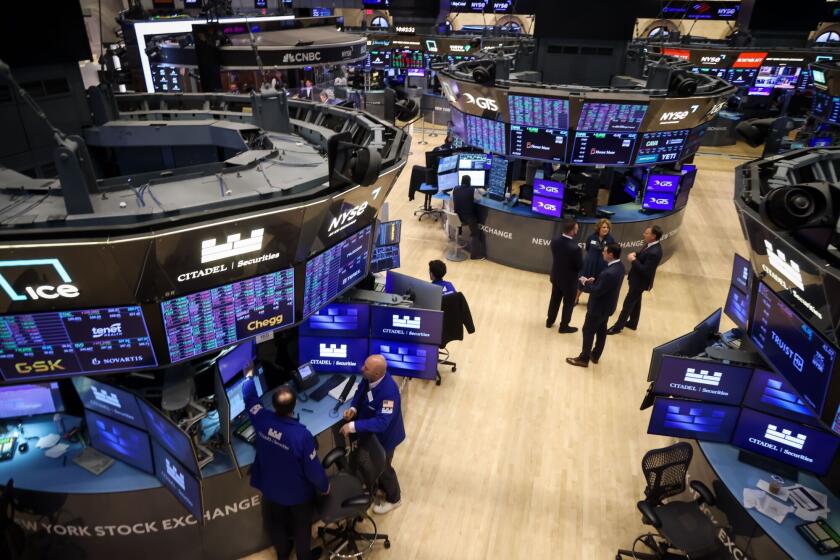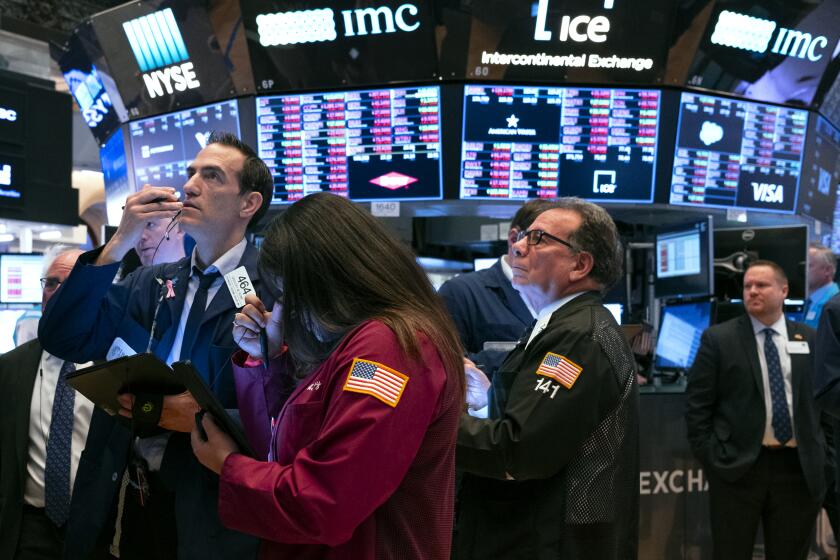In a tight jobs market, employers spend more time training their low-paid staff

- Share via
You’d need a cast of thousands to reenact Black Friday at a Walmart store, so virtual reality comes in handy at the company’s training centers. Employees get to experience a shopper stampede on their headsets, part of a widening national effort that encompasses some 7,000 workers a week.
The retail giant isn’t alone. From hotels to fast-food chains, employers in service industries are setting up training programs or revamping the ones they have.
That’s what is supposed to happen in a tight labor market, a description that fits the U.S., where unemployment is at a 49-year low. Since there’s competition over a limited number of workers, companies have to lower requirements at the entry level — then spend more time and money training the people they hire.
“If you’re in a relatively low-wage labor market in the service sector — say Starbucks, Walmart, McDonald’s — notice that they all have training programs now,” said Anthony Carnevale, director of the Georgetown University Center on Education and the Workforce. It’s “one of the things that a healthy economy encourages.”
There’s a shortage of data on workplace education because the Bureau of Labor Statistics hasn’t surveyed the topic for more than 10 years. Still, something seems to be stirring. One reason may be that technology is lowering the cost of training.
“They’re far more willing to spend money on technology and software to train people than they are to hire trainers,” said Peter Cappelli, director of the Center for Human Resources at the University of Pennsylvania’s business school.
That’s an opportunity for start-ups like 4-year-old Strivr, which designs VR programs to simulate Black Friday at Walmart or an attempted robbery at a Verizon store.
Strivr Chief Executive Derek Belch described how one of his modules is used at low-cost airline JetBlue to teach staff members how to do a quick “walkaround” cabin inspection between flights. It’s hard to do that on an actual plane, he says, “because it has to go fly in 20 minutes.” Without virtual reality, the carrier would have to rent a plane for training or pay overtime to do it late at night.
On top of in-house education, companies such as JetBlue, Walmart and Chipotle offer programs that link up to college credits, and they’ve stepped up tuition reimbursement plans.
Walmart employees can pursue an associate or bachelor’s degree at three nonprofit schools for $1 a day. Kourtney Miller, 29, signed up after eight years at the retailer and said she’s started getting inquiries from colleagues. One question that often gets asked, she said, is: “They’re saying it’s a dollar a day. Is it true?”
Such programs can go at least some of the way to redressing an imbalance in training, Georgetown’s Carnevale said: It tends to be “the more educated and higher-skilled workers” who get more of it — and who then get paid better as a result. Less-qualified employees risk getting excluded, and Carnevale said women have historically benefited less than men, too.
One objection to training that keeps resurfacing among employers is: What if workers pocket the new skills and take them elsewhere? “They thought they could hire the people with talent, rather than having to develop it internally,” Cappelli said.
The tighter the labor market gets, the less force that argument carries. Some companies like JetBlue still require some kind of no-quit commitment from staff members who participate in college programs. Others don’t. If employees gain a degree, “they can use that at Walmart, hopefully,” said Drew Holler, senior vice president at the retailer. “Or they can go use that somewhere else.”
Walmart’s initiative is fairly new, but JetBlue and Chipotle said internal surveys show an increased commitment to the company among student-employees who enroll.
Although workforce training may have picked up lately, it remains much less widespread than it used to be, said Brad Markell, executive director of the Industrial Union Council at America’s biggest labor group, the AFL-CIO. “Companies just don’t train like they used to,” he said.
Cappelli agreed that there was probably a lot more help on offer from employers 30 years ago. And he said college-linked programs shouldn’t be exaggerated either: They’re often limited in scope, offering only online classes or restricting students to a single course.
Still, employers aren’t “claiming that this is all about building American skills,” he said. “They’re trying to do it to build the workforce that they need right now. And that’s OK.”
Hagan and Edwards write for Bloomberg.
More to Read
Inside the business of entertainment
The Wide Shot brings you news, analysis and insights on everything from streaming wars to production — and what it all means for the future.
You may occasionally receive promotional content from the Los Angeles Times.










